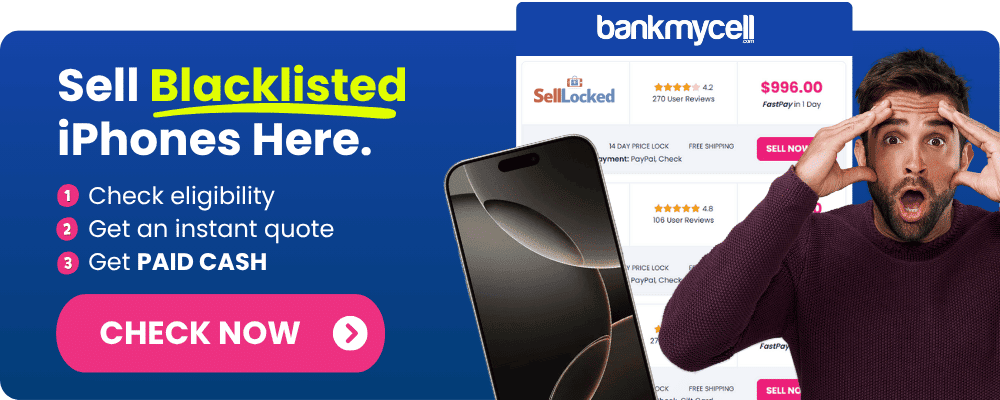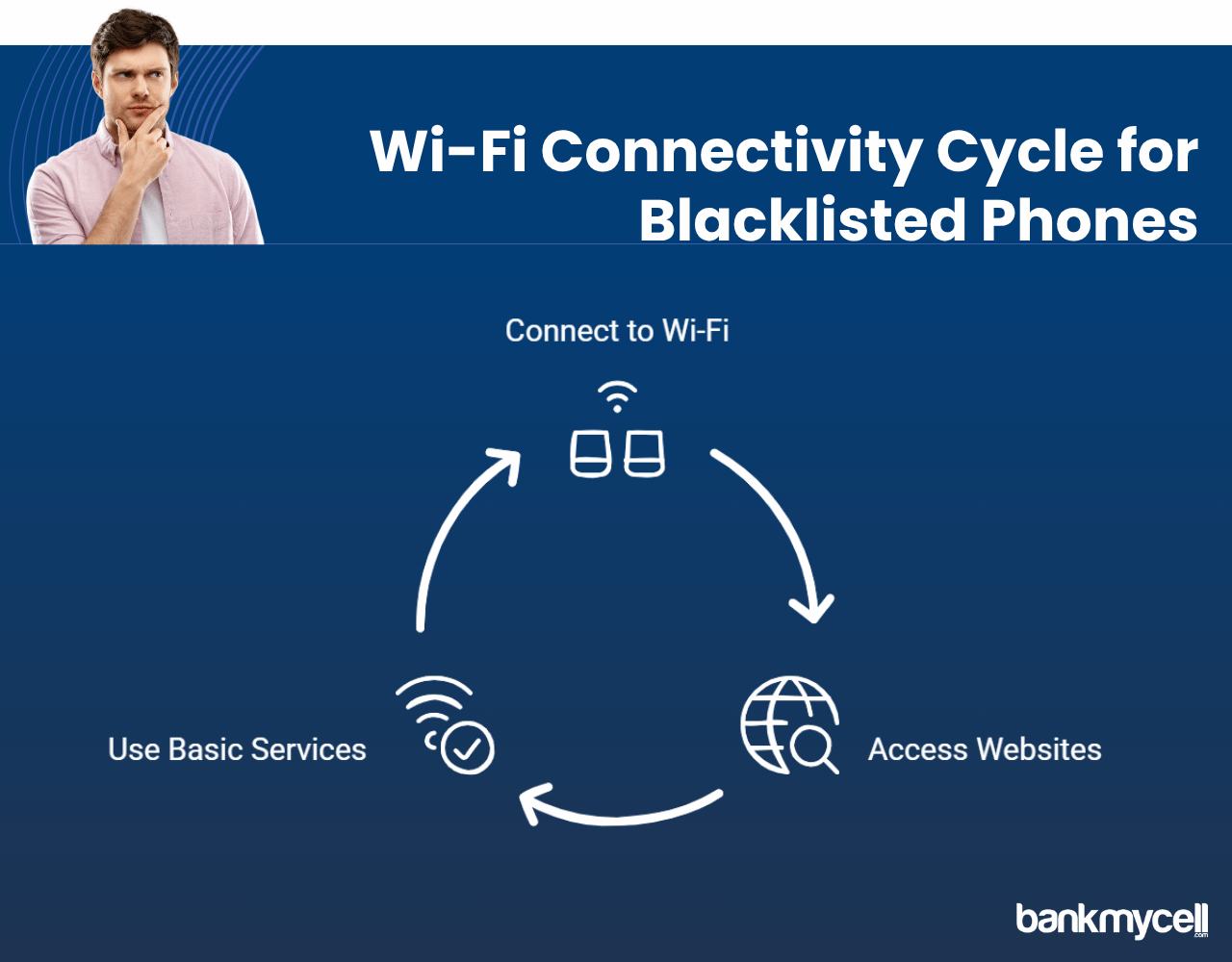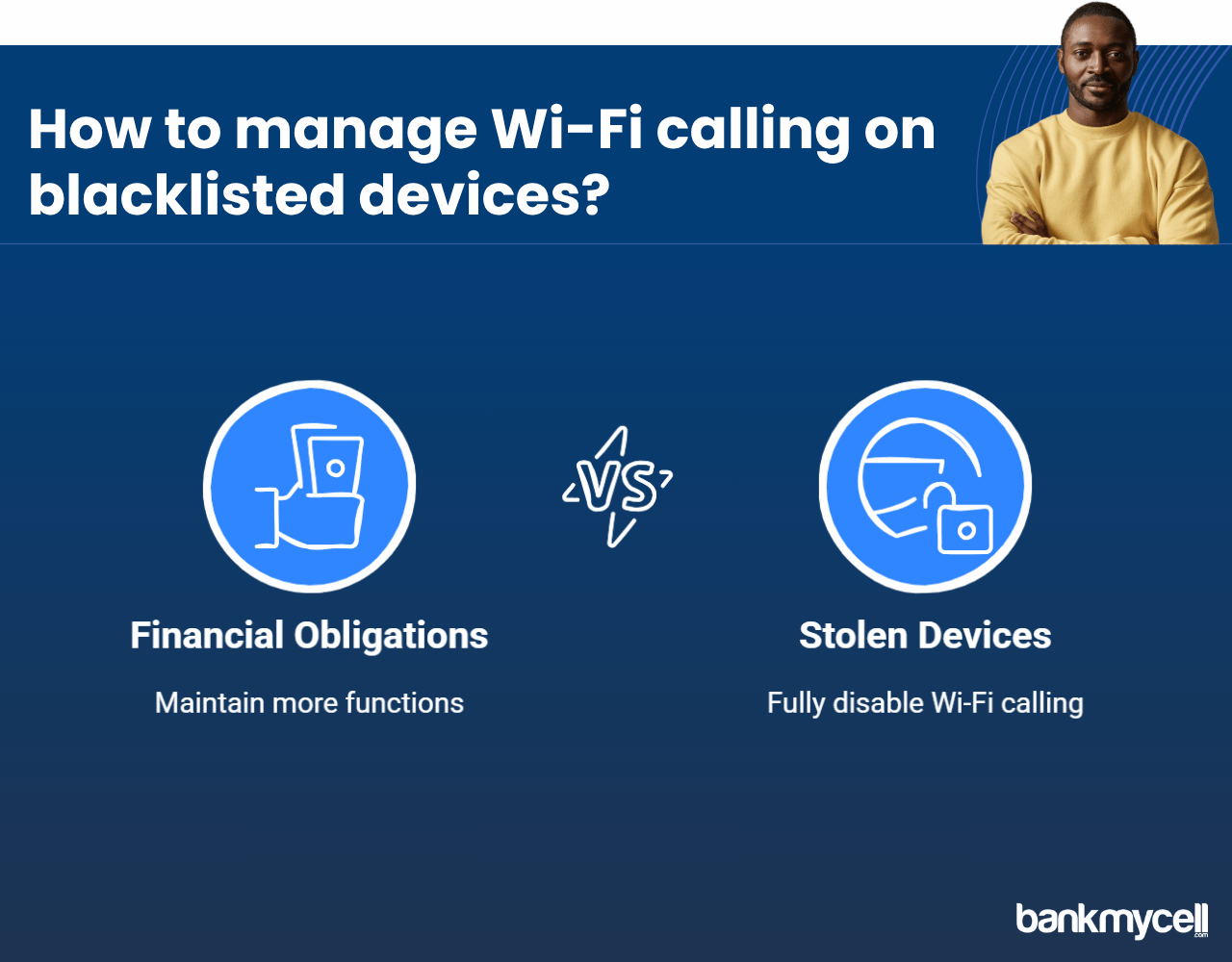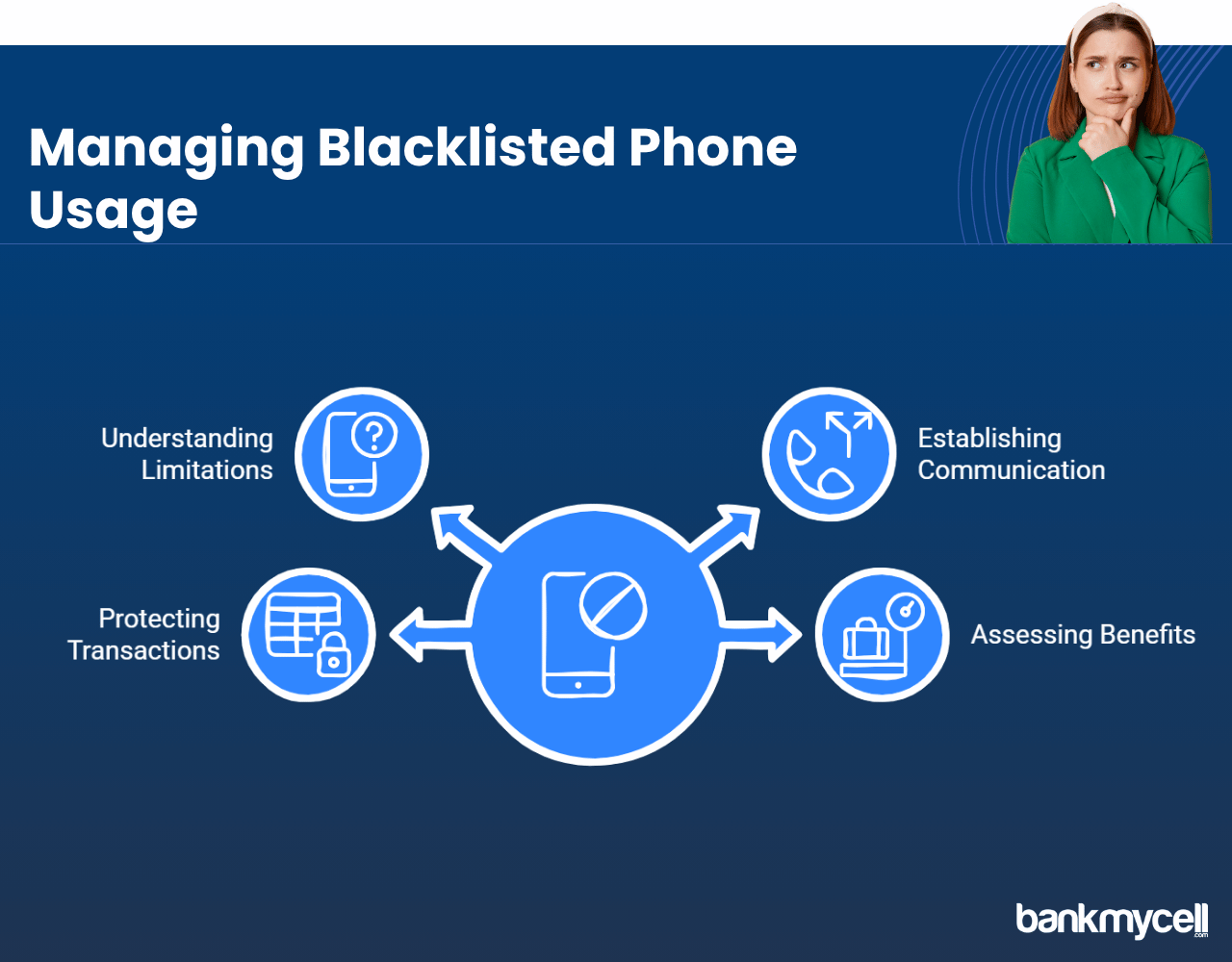Can a Blacklisted Phone Connect to WiFi? The Complete Guide
60-Second Summary
Blacklisted phones can connect to WiFi because WiFi operates independently from cellular network restrictions. When carriers blacklist a device, they flag the IMEI number to block cellular service, but this doesn’t affect the WiFi hardware components.
What Still Works on WiFi
- Basic internet functionality: Web browsing, email, streaming (Netflix, YouTube, Spotify)
- Pre-verified communication apps: WhatsApp (if already verified), Telegram, Discord, Facebook Messenger
- App downloads and updates through official stores
- Cloud services: iCloud backups and system updates
- Gaming and entertainment apps that don’t require cellular verification
Critical Limitations You’ll Face
- No phone calls or SMS through regular phone app
- Apps requiring SMS verification won’t work – including many banking apps
- WiFi calling is unreliable – carriers often disable this feature on blacklisted devices
- New app installations may fail if they need phone number verification
Security Risks to Consider
Public WiFi becomes more dangerous with blacklisted phones because:
- Device may contain previous owner’s data
- Missing critical security updates increase vulnerability
- Higher risk of data breaches and unauthorized access
- Previous owner might retain account access
Alternative Communication Solutions
Best options for staying connected:
- Google Voice: Provides phone number for WiFi calls and texts
- Telegram: No phone verification required
- Discord: Email-only registration
- Pre-verify apps before blacklisting to maintain functionality
Bottom Line: While blacklisted phones retain WiFi functionality for basic internet use, they cannot deliver the complete smartphone experience. The security risks, communication limitations, and ongoing restrictions make selling the device and purchasing a fully functional replacement the smartest solution – or consider BankMyCell‘s buyback services to maximize your device’s value toward a replacement.
Alternative Solution: Dealing with a blacklisted phone’s limitations? BankMyCell accepts blacklisted devices from verified legal owners, providing competitive buyback offers with free shipping and complete data security. Turn your restricted device into value toward a fully functional replacement iPhone instead of dealing with ongoing connectivity and security issues.
Disclaimer: You can sell blacklisted iPhones as long as you’re the legal owner. For example, if you bought the iPhone from a store or a person and it’s not found or stolen, you can sell it. If you’re unsure, check with the store you choose, and they will guide you.
| TODAY'S BEST LOCKED iPHONE BUYBACK OFFERS | |||
|---|---|---|---|
| Device | Blacklisted | ||
| iPhone 16e | $360.00 | Compare | |
| iPhone 16 Pro Max | $1045.00 | Compare | |
| iPhone 16 Pro | $870.00 | Compare | |
| iPhone 16 Plus | $420.00 | Compare | |
| iPhone 16 | $395.00 | Compare | |
| iPhone 15 Pro Max | $730.00 | Compare | |
| iPhone 15 Pro | $650.00 | Compare | |
| iPhone 15 Plus | $335.00 | Compare | |
| iPhone 15 | $345.00 | Compare | |
| iPhone 14 Pro Max | $570.00 | Compare | |
| iPhone 14 Pro | $400.00 | Compare | |
| iPhone 14 Plus | $265.00 | Compare | |
| iPhone 14 | $235.00 | Compare | |
| iPhone 13 Pro Max | $280.00 | Compare | |
| iPhone 13 Pro | $220.00 | Compare | |
| iPhone 13 Mini | $115.00 | Compare | |
| iPhone 13 | $140.00 | Compare | |
| iPhone 12 Pro Max | $150.00 | Compare | |
| iPhone 12 Pro | $140.00 | Compare | |
| iPhone 12 Mini | $115.00 | Compare | |
| iPhone 12 | $100.00 | Compare | |
| iPhone 11 Pro Max | $115.00 | Compare | |
| iPhone 11 Pro | $115.00 | Compare | |
| iPhone 11 | $105.00 | Compare | |
| * Best market prices updated December 27th 2025 | |||

Data Source: BankMyCell compares over 100,000+ quotes and customer reviews from 20+ trusted buyback stores every 15 minutes via our data feeds, making us America’s #1 time-saving trade-in supermarket.
Do you own a blocked phone and want to know if it’s still possible to use Wi-Fi on your device?
Having a blacklisted phone can be frustrating. The inability of your mobile device to connect to cellular networks turns it into what feels like an expensive paperweight. You may still be curious about whether Wi-Fi functionality remains available on your blacklisted phone before deciding to completely abandon it.
Here’s the problem:
Mobile carriers flag the phone’s IMEI (International Mobile Equipment Identity) to prevent network connectivity when it is blacklisted due to reports of theft, loss or unpaid bills. Blacklisted devices demonstrate inconsistent Wi-Fi and internet access capabilities.
And that’s not all…
A blacklisted phone faces important restrictions that impact its day-to-day operation and network security even though it can connect to Wi-Fi networks.
What Happens to Wi-Fi When Your Phone is Blacklisted?
A blacklisted phone’s IMEI blocks cellular service but Wi-Fi remains functional because cellular network restrictions do not apply to Wi-Fi connections.
A phone that gets blacklisted will have its IMEI number placed into the GSMA IMEI database which service providers have access to. The phone loses its ability to attach to cellular networks and use cellular service after being blacklisted.
Wi-Fi works independently and stays unaffected by the status of cellular connectivity. Blacklisting your phone will not interfere with the hardware components that manage Wi-Fi connections and internet access.
This means:
- Even if your phone is blacklisted it maintains the ability to connect to Wi-Fi networks for internet use.
- You can access websites through Wi-Fi connections
- Even when a device has been blacklisted basic Wi-Fi services continue to work properly
Think about it:
The phone’s Wi-Fi and cellular connections function as independent systems. While the blacklist blocks cellular service access, Wi-Fi operates through distinct hardware components which enable users to connect to online services.
Blacklisted phones still maintain basic Wi-Fi functionality despite restrictions on cellular services.
What Works on Wi-Fi with a Blacklisted Phone:
A phone under blacklist restrictions functions differently when connected to Wi-Fi compared to an unrestricted device. We need to understand the capabilities and limitations of your blacklisted device:
A blacklisted phone receives basic internet access through Wi-Fi which allows web browsing on certain sites and proper functioning of email services.
Basic Internet Access:
- Web browsing works normally on specific websites
- Email services function properly
- Streaming services like Netflix, YouTube, and Spotify
- Social media apps operate with reduced features on blacklisted devices.
Some Communication Apps:
- WhatsApp (if already verified) and other apps
- Facebook Messenger
- Telegram
- Discord and other third-party services
Disclaimer: You can sell blacklisted iPhones as long as you’re the legal owner. For example, if you bought the iPhone from a store or a person and it’s not found or stolen, you can sell it. If you’re unsure, check with the store you choose, and they will guide you.
Other Functionality:
- App Store and app downloads
- iCloud services and backups
- System updates
- Games and applications that function without needing cellular verification
What Doesn't Work or Has Limitations on a Blacklisted Phone:
Blacklisted phones have several functional restrictions including but not limited to cellular-dependent features and certain services with limited accessibility.
Cellular-Dependent Features:
- Phone calls (through regular phone app)
- SMS text messages
- Cellular data (obviously)
- Features requiring SMS verification that limit access
Semi-Functional Services:
- iMessage and FaceTime (may require prior activation)
- Wi-Fi calling functionality depends on both the carrier service and the phone’s blacklist status.
- New app installations requiring SMS verification
- Mobile banking apps (many require SMS verification)
Would you prefer to move to a fully functional mobile device?
Even blacklisted phones have value. Visit BankMyCell to discover the highest selling price available for your blacklisted device which can help you purchase a new phone with enhanced security features.
Wi-Fi Calling on a Blacklisted Phone
The functionality of Wi-Fi calling on a blacklisted phone presents a complex issue.
Blacklisted phones create uncertainty with Wi-Fi calling since it occupies an undefined space between cellular networks and internet-connected Wi-Fi services.
The ability to use Wi-Fi calling with a blacklisted phone depends on multiple factors including carrier decisions and prior activation status.
Can you use Wi-Fi calling on a blacklisted phone?
The answer is: it depends. The following elements determine network access capabilities:
- Certain service providers enforce Wi-Fi calling restrictions by fully disabling the feature on devices that are blacklisted.
- A phone with previously activated Wi-Fi calling might maintain its function after being blacklisted
- Blacklisted phones for unpaid financial obligations often maintain more functions compared to phones reported as stolen.
But here’s the truth:
Mobile carriers typically eliminate any initial success of Wi-Fi calling on blacklisted phones through updates. A flagged IMEI number on a blacklisted phone cannot rely on Wi-Fi calling for lasting functionality.
Potential Security Issues and Data Breaches
Blacklisted phones present security challenges when used on Wi-Fi networks.
Purchasing and using a second-hand blacklisted phone exposes users to various security risks and network vulnerabilities.
- The phone’s compromised security arises from its status as either a lost device or a stolen phone reported to blacklists.
- Software that has fallen out of date restricts device functionality which causes users to miss critical security patches thus elevating the likelihood of security breaches.
- The previous owner might still have control over some accounts and sensitive information.
- The device may contain leftover private details about its original owner.
Despite Wi-Fi functionality being intact, blacklisted phones should not serve as primary devices because they present serious security risks. Connecting a blacklisted device through public networks leads to higher chances of unauthorized users accessing your data.
Alternative Communication Methods for Blacklisted Phones
For those using blacklisted phones dependent on Wi-Fi networks these are the best communication methods available.
Best Apps for Communication on Blacklisted Phones:
- A verified WhatsApp account will function on Wi-Fi networks despite the phone being blacklisted.
- Telegram enables user access without needing phone verification.
- Discord allows users to access all features using only their email address.
- Facebook Messenger: Works with a Facebook account
- Google Voice delivers a phone number that enables users to make calls and send texts using Wi-Fi connections.
Pro Tip: Users should establish and verify these apps ahead of time to prevent service provider blacklisting or alternatively utilize a different phone temporarily for verification purposes.
Disclaimer: You can sell blacklisted iPhones as long as you’re the legal owner. For example, if you bought the iPhone from a store or a person and it’s not found or stolen, you can sell it. If you’re unsure, check with the store you choose, and they will guide you.
Wrapping It Up
A phone marked as blacklisted retains some functionality because it can still access Wi-Fi networks. The blacklisted device operates with many more restrictions than a non-blacklisted device.
As you learn which features remain functional and which ones fail you will be able to:
- Decisions regarding blacklisted phone usage require an understanding of its limitations and potential functions.
- Establish communication channels through services provided by third-party companies
- Protect your transactions by taking necessary security measures to prevent fraudulent actions.
- Assess whether maintaining possession of the device benefits you.
Blacklisted phones can connect to Wi-Fi but they cannot deliver the complete experience of a device that has been registered correctly. The best course of action to bypass content limitations when you own a blacklisted phone is to sell the device and use the proceeds to purchase a new phone.
You can utilize many apps on a blacklisted phone through Wi-Fi but certain apps requiring SMS verification or cellular connections won’t function properly.
While using a blacklisted phone, certain applications won’t work correctly. Blacklisted phones prevent apps that need SMS verification or cellular connections from operating effectively. Most applications that require only internet access will operate correctly when connected to a Wi-Fi network.
Helpful FAQ's
Will iMessage work on a blacklisted phone?
A phone that had iMessage set up before being blacklisted may still use the service. The blacklisted IMEI can cause problems during new activations and make device performance inconsistent.
Can mobile carriers track Wi-Fi usage on blacklisted phones?
Even when your phone is blacklisted mobile carriers cannot monitor your Wi-Fi usage since Wi-Fi traffic runs through your internet service provider. The Wi-Fi network’s internet service provider handles your Wi-Fi data because your mobile carrier cannot track this traffic after blacklisting your device’s IMEI.
Can I create a new Apple ID on a blacklisted phone?
You can establish a new Apple ID on a blacklisted phone provided you have access to Wi-Fi. The blacklisted status of your phone creates obstacles when attempting to complete verification steps that need SMS.
Is it legal to use a blacklisted phone on Wi-Fi?
Blacklisted phones remain legal for Wi-Fi use but not for cellular network access. Using a stolen phone that you bought or used knowingly might result in legal issues and trigger alerts for suspicious behavior even when connected only to Wi-Fi. You can use a blacklisted phone on Wi-Fi legally if you are its legitimate owner or the original owner.





